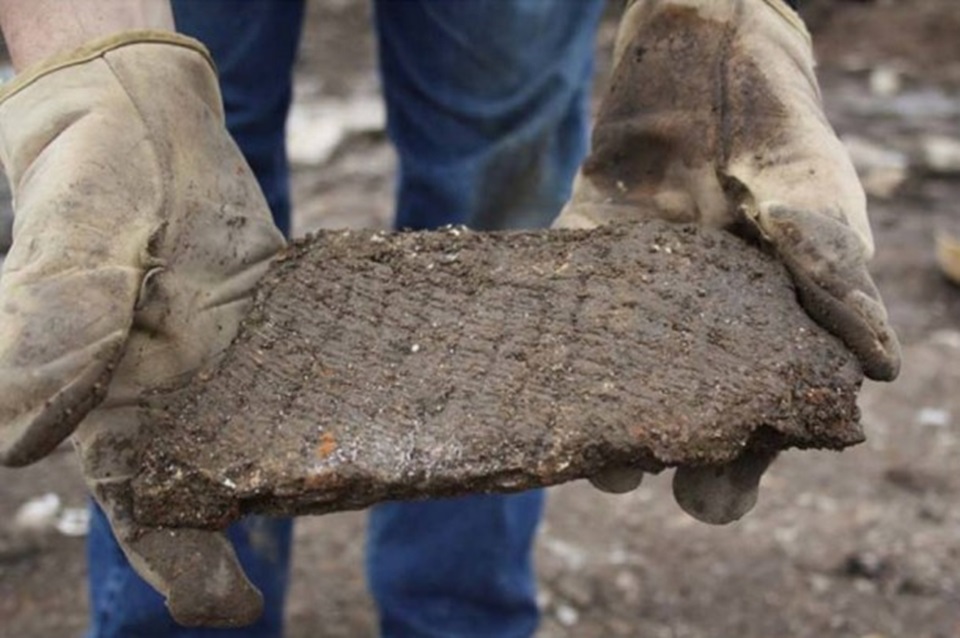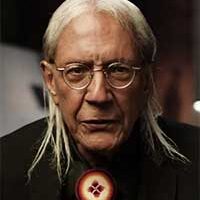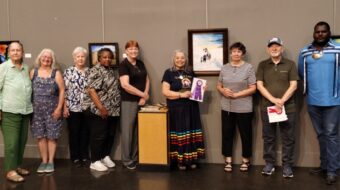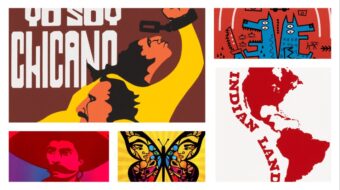
NASHVILLE, Tenn. – They don’t want people to forget that in the 1300s a huge Native metropolis flourished beneath what is now the city of Nashville. They aim to preserve this important part of the heritage of Native Americans. They are determined to stop “development” that destroys history.
On Friday, January 12, a meeting was held between the Indigenous community, their allies and the mayor’s office to discuss the recognition and preservation of ancient sites on the East Bank of the city. Bob Mendes, the Metropolitan Nashville chief development officer, represented the city and the Indigenous Peoples Coalition, the Wilco Powwow, the Native American Indian Association and OJI:SDA (Sustainable Indigenous Futures) represented the Native community. Indigenous allies included the Tennessee Ancient Sites Conservancy (TASC) and a host of other community organizations.
The subject of the meeting was the impending development of the section of the city known as the East Bank of the Cumberland River that flows through Nashville. The East Bank, a somewhat run-down industrial district, is being slated for massive development by the Fallon Company, the Oracle Corporation and their associated businesses.
The East Bank and all of downtown Nashville sits atop the ruins of a huge, ancient Indigenous city that flourished several centuries ago. Indeed, this ancient metropolis had, from confirmed archaeological studies, a population of 400,000 in the 14th century.
This was during what is called the Mississippian Period of Indigenous history, which covered the present-day Eastern, Southeastern and Midwestern United States. Taking into account the surrounding suburbs of towns, villages, hamlets and farmsteads, the Indigenous population of Middle Tennessee was over one million, which was the largest Native population at that time in all the Southeast.
At this period in history, the ancient city and its satellite communities had a population greater than that of Paris, France at 500,000 and London, England at 200,000. It was one of the largest cities in all of the ancient Americas, indeed, in all the world in that historical epoch. By the 15th century, the huge populations of ancient Nashville and its environs had mysteriously disappeared. The vast populations were astonishingly absent.
Discovery of the “Buried City”
The unearthing of the ancient “Buried City” took place when digging was being done for the construction of the new Sounds Baseball Stadium at an old baseball park site in 2014. Efforts by the Indigenous community and the historic preservation community represented by the American Indian Coalition (now the Indigenous Peoples Coalition) and the Tennessee Ancient Sites Conservancy (TASC), respectively, prompted an archaeological excavation that discovered evidence of a vast Indigenous city that 900 years existed where downtown Nashville now stands.
Ruins of the ancient metropolis lie layers beneath the pavement and buildings of modern Nashville. From downtown Nashville and directly across the Cumberland River to the East Bank and beyond once stood a flourishing, bustling urban center with tens of thousands of residents.
This vast metropolis was the center of an advanced, brilliant civilization that arose between 800 to 1500 CE (Common Era). These Mississippian epoch cultures included the earthen mound cities of Cahokia in Illinois, Moundville in Alabama and Spiro in Oklahoma, to cite just a few of the known ancient urban civilizations.
These were complex, truly urbanized societies where the residents pursued a variety of occupations under a hierarchy of organized leadership composed of a civil and military structure. In those pre-contact times the people of these societies were advanced agriculturalists ( two-thirds of the world’s crops have Western Hemisphere Indigenous origins), brilliant engineers, physical and social scientists, advanced physicians (the U.S. pharmaceutical industry is based on Indigenous medicines), general surgeons (Indigenous doctors in North, Central and South America were performing and delicate operations hundreds of years ago.), far ranging merchants (vast trade networks existed throughout the Americas), plastic surgeons, advanced mathematicians (ancient Mayas developed the concept of zero hundreds of years before the Europeans), architects, urban planners, (large Indigenous cities existed from the Midwest, Southeastern and Southwestern U.S. to Central and South America), poets, astronomers, anesthesiologists, cartographers, visual artists, metallurgists, optical technologists, road builders, brain surgeons, psychologists, carpenters, musicians, stone masons, plumbers, dentists, scribes, ecologists, orators, environmentalists, botanists and political scientists.
All of these advanced cultures and societies existed in the Western Hemisphere in pre-contact days and this writer has never ceased to be amazed at what existed before the massive European invasion. In fact, in just the past few weeks it has been reported that ruins of sprawling ancient cities in the Amazon are comparable to those of the Aztecs and Mayas. Similarly, the “buried city” of ancient Nashville has been compared to those magnificent civilizations.
Ancient Nashville was also the center of a prodigious salt-making industry, as indicated by the finding of huge pottery vessels called contemporarily by archaeologists “salt pans.” The manufacture of salt was on such a large scale that it was exported throughout the entire Southeast.
The early city abounded in the invention and production of eating implements, particularly spoons and forks, at a time when most of the rest of the world was still eating with its fingers. In fact, the first known “spork,” a combination spoon and fork, in human history was invented in the Cumberland River region, predating by a thousand years the use of sporks in the 20th century in U.S. fast food restaurants.
The ancient metropole is called locally “Salttown” or the “Buried City.” Currently, the archaeological sites contained in the “Buried City” face the most imminent onslaught yet from development.
In light of the latest development threat to Indigenous history from the earth movers of big business. the Indigenous community requested a meeting with Bob Mendes, who as the newly minted Chief Development Officer of recently elected Mayor Freddie O’Connell, is tasked with the responsibility for development of the East Bank.
At the recent meeting the Indigenous community expressed concerns which included the issues of a setting aside of several acres for a park dedicated to memorializing the ancient Indigenous history of the East Bank complete with an interpretive center under the supervision of Indigenous organizations; the establishment of an advisory council composed of local Indigenous community members, non-Indigenous community members, and appropriate Metro officials to see this preservation initiative forward; a commitment from the current administration to work directly with Indigenous representatives on Metro initiated archaeological studies in particular those scheduled for the East Bank and the issuance of a land acknowledgment honoring the original Indigenous peoples of the Metropolitan Nashville/Middle Tennessee area.
It must also be noted that a massive study was done of the East Bank sites in 2000. The ancient ruins were found to be such a significant cultural resource that the study concluded that the East Bank sites were eligible for listing in the National Register of Historic Places (NRHP).
The meeting ended with a request by the Indigenous community that after Mendes had presented these issues to Metro government for consideration that a follow up meeting be held for the further preservation of the Indigenous history of ancient Nashville.
We hope you appreciated this article. At People’s World, we believe news and information should be free and accessible to all, but we need your help. Our journalism is free of corporate influence and paywalls because we are totally reader-supported. Only you, our readers and supporters, make this possible. If you enjoy reading People’s World and the stories we bring you, please support our work by donating or becoming a monthly sustainer today. Thank you!












Comments